This is the fourth in a series of posts on the Nikon Z50. You should be able to find all the posts about that camera in the Category List on the right sidebar, below the Articles widget. There’s a drop-down menu there that you can use to get to all the posts in this series; just look for “Z50”.
The kit lens for the Z50 is a tiny little thing. It’s a 16-50 mm f/3.5 to f/6.3, that collapses into a pancake a bit over an inch long. It’s made of plastic and glass, and it’s dirt cheap, especially if you buy it with the camera. It’s hard to imagine that it’s any good at all.
But it is.
It’s so good, in fact, that I didn’t post this morning’s results of my informal test against the excellent Nikon 24-70mm f/4 Z-mount lens because I couldn’t believe how good the lens was, and thought I’d screwed up. So I ran another test with a Siemens Star target.
Here’s the scene:
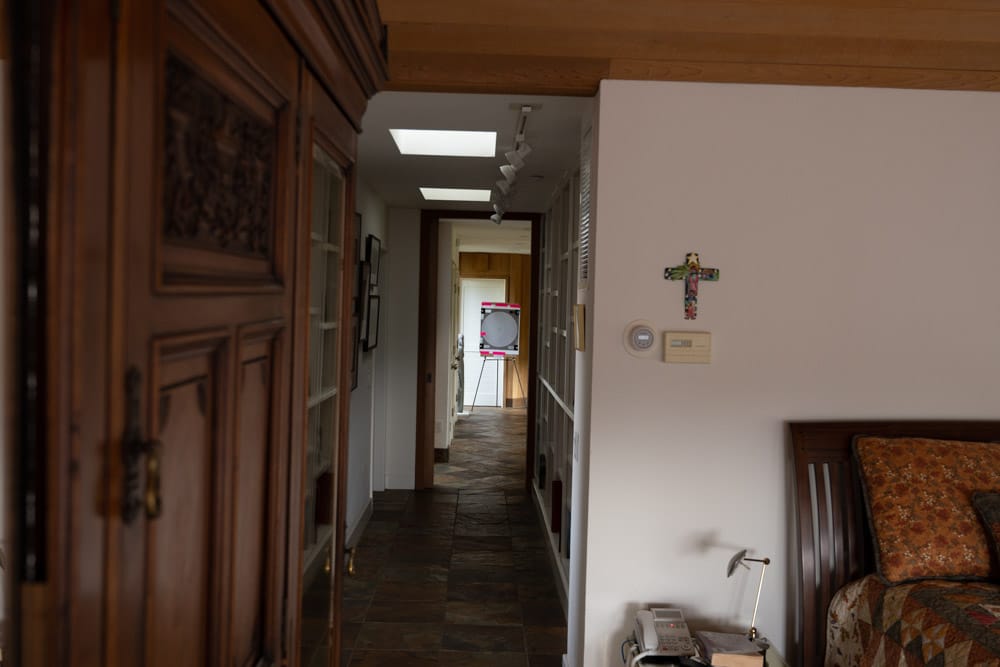
The images were exposed at f/4.5 and 1/4 second at ISO 100, except for the 50 mm pair from the 16-50, which was exposed at f/6.3 and 1/4 second, because it doesn’t open up to f/4.5 at that focal length. I used spot AF-S, made three pictures at each setting, and picked the best one for this post.
I developed the images in Lightroom with the following settings:
- Adobe Color Profile
- Sharpening amount 20, radius 1, detail 0 (this is much less sharpening than Lr’s default)
- White balance to the gray background of the Siemens Star
- Exposure + 1 stop for the f/6.3 image
Let’s look at some really tight crops of the star, at about 400% magnification:
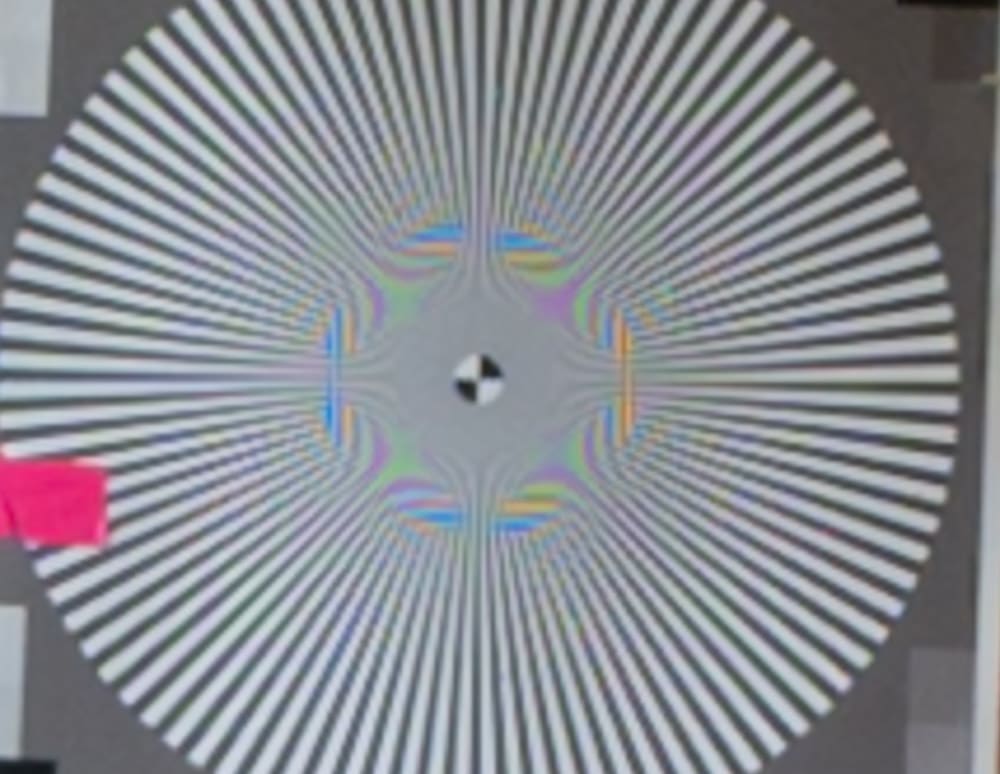
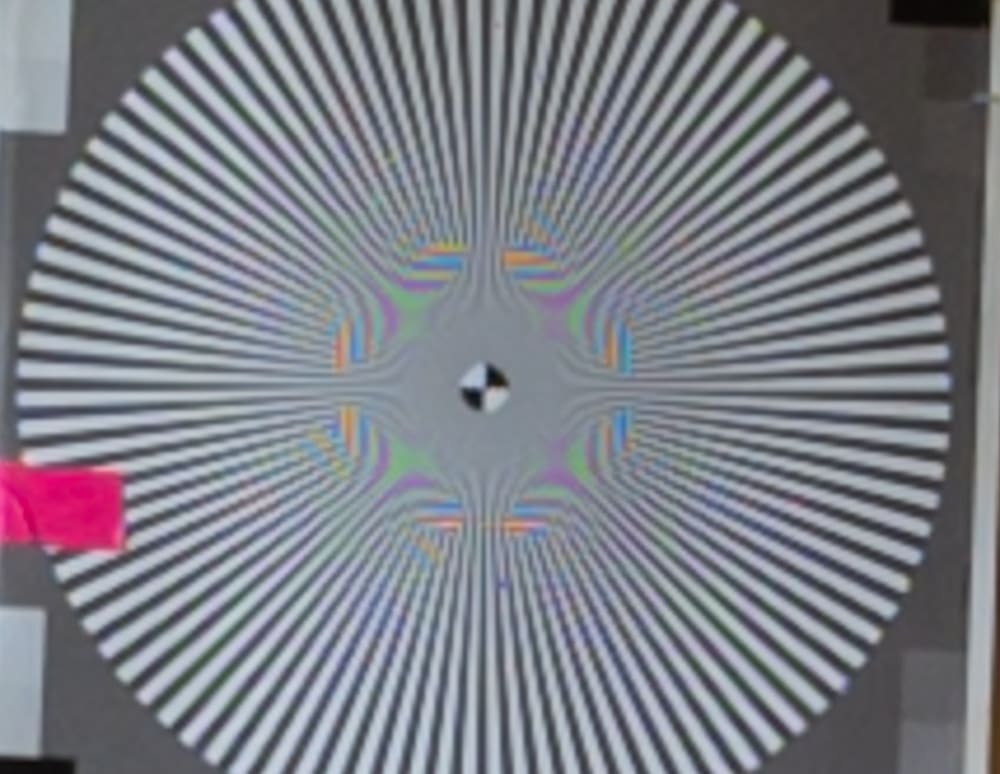
Look at that! The cheap lens is almost as sharp, and both lenses are laying down a lot more detail than the sensor can deal with.
In the corner:
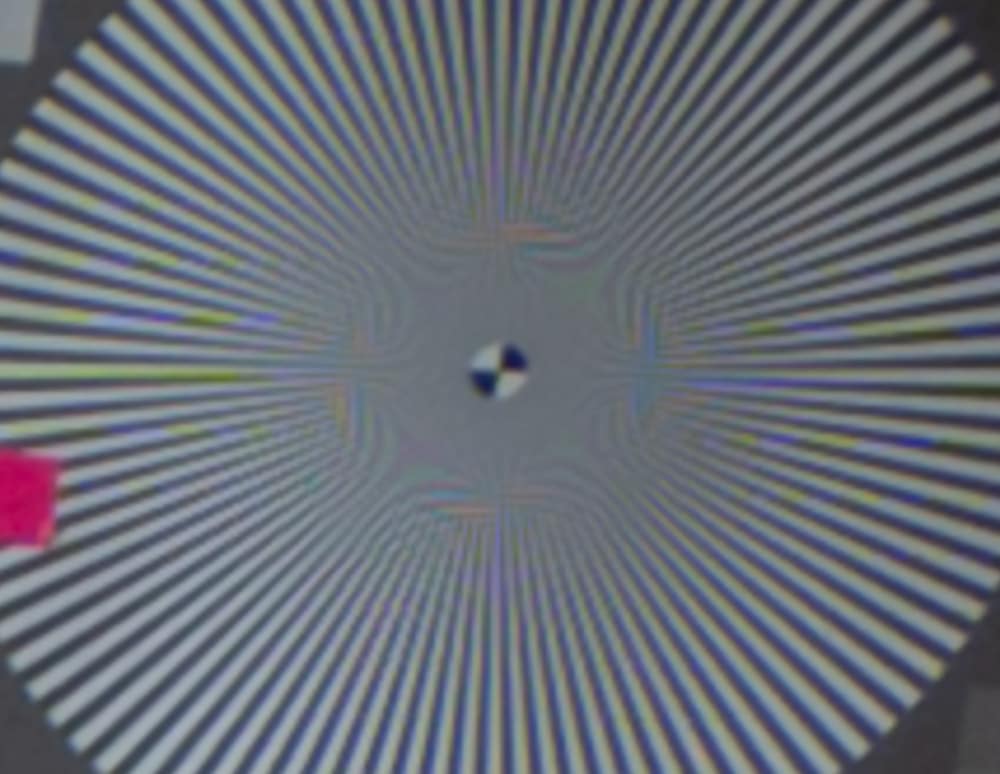
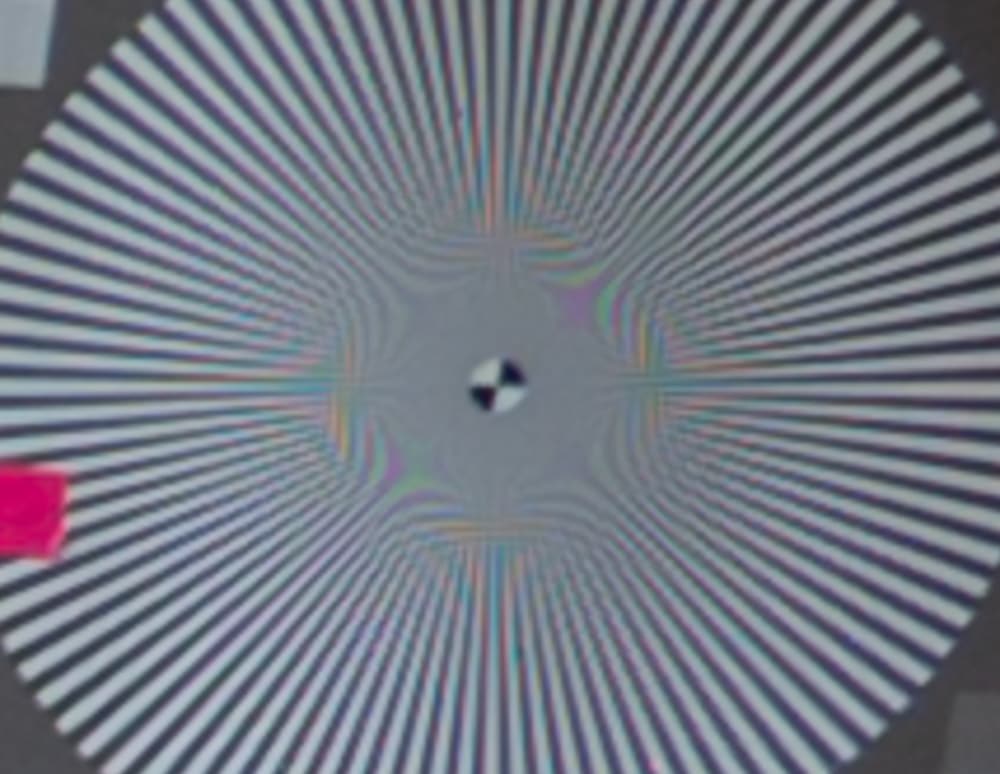
There’s more falloff with the 16-50, and it’s not quite as sharp, but it’s still doing an excellent job.
At 50 mm in the center:
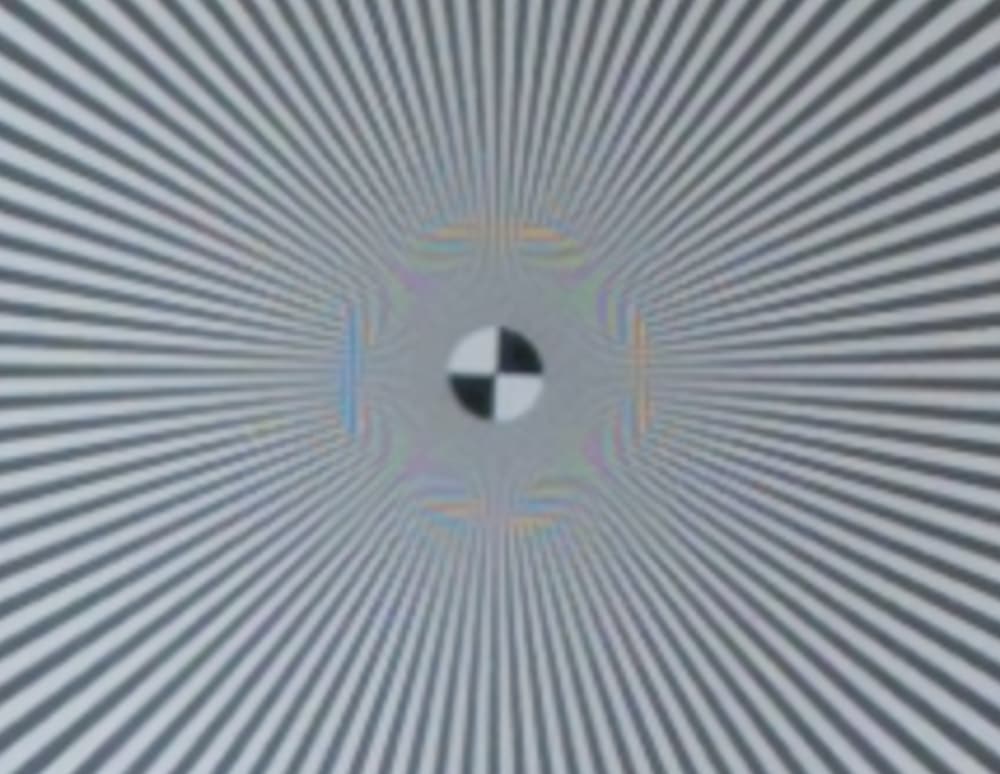
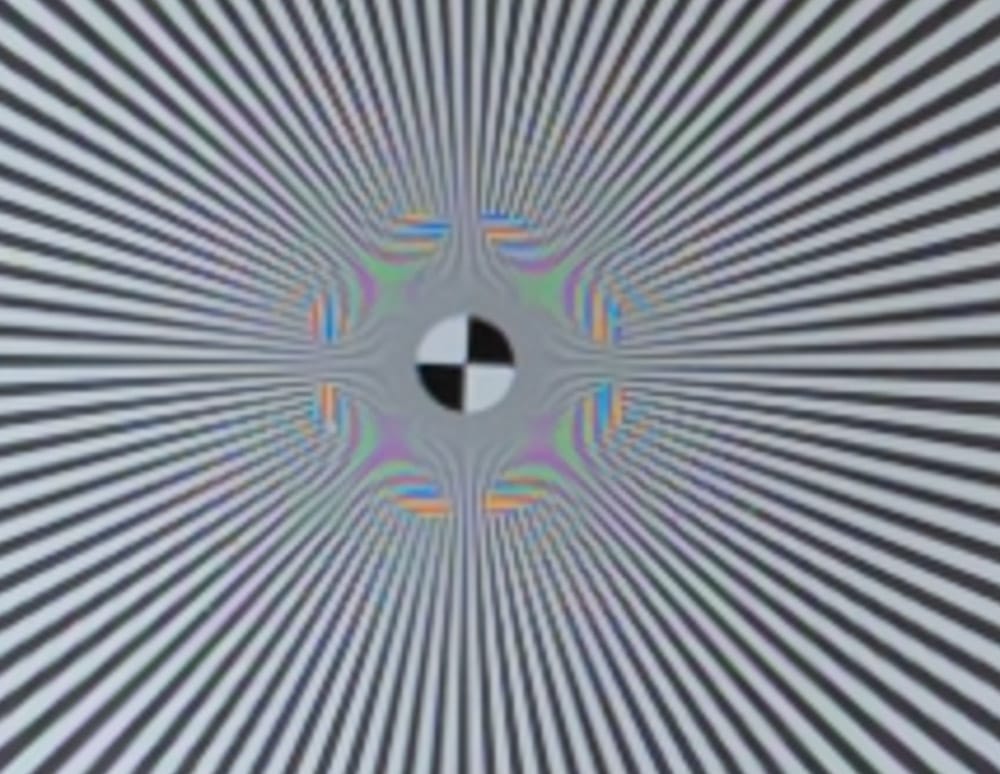
The 16-50 doesn’t have as much contrast, and is not quite as sharp. We are being a bit tough on the 24-70 here, since it’s a stop wider.
In the corner:
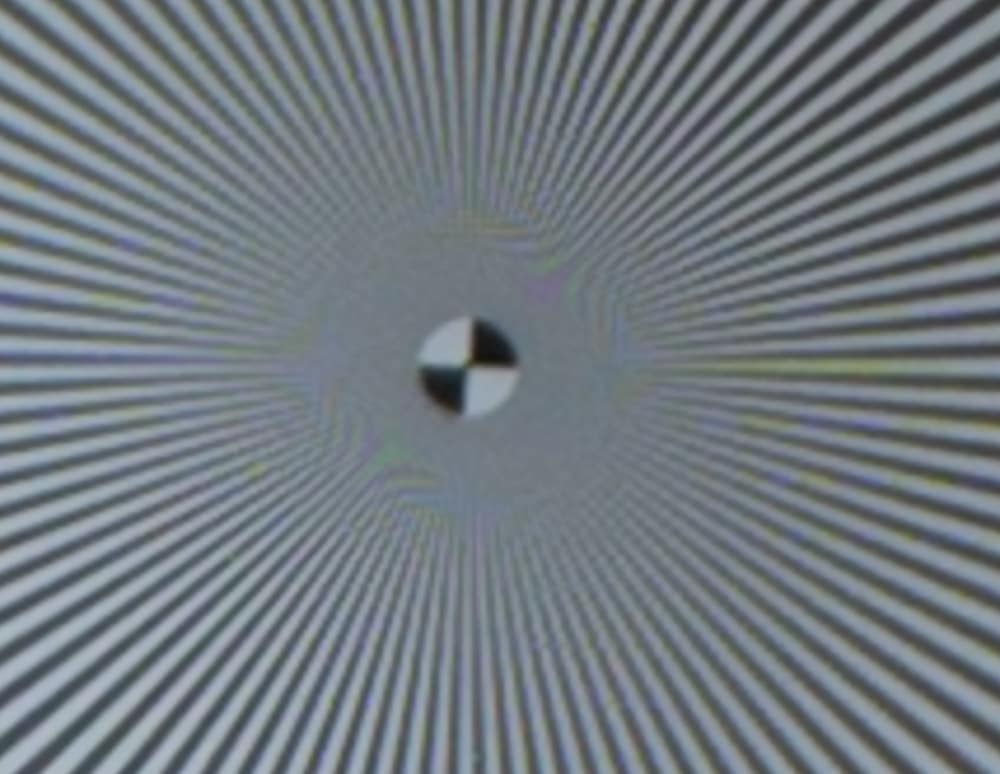
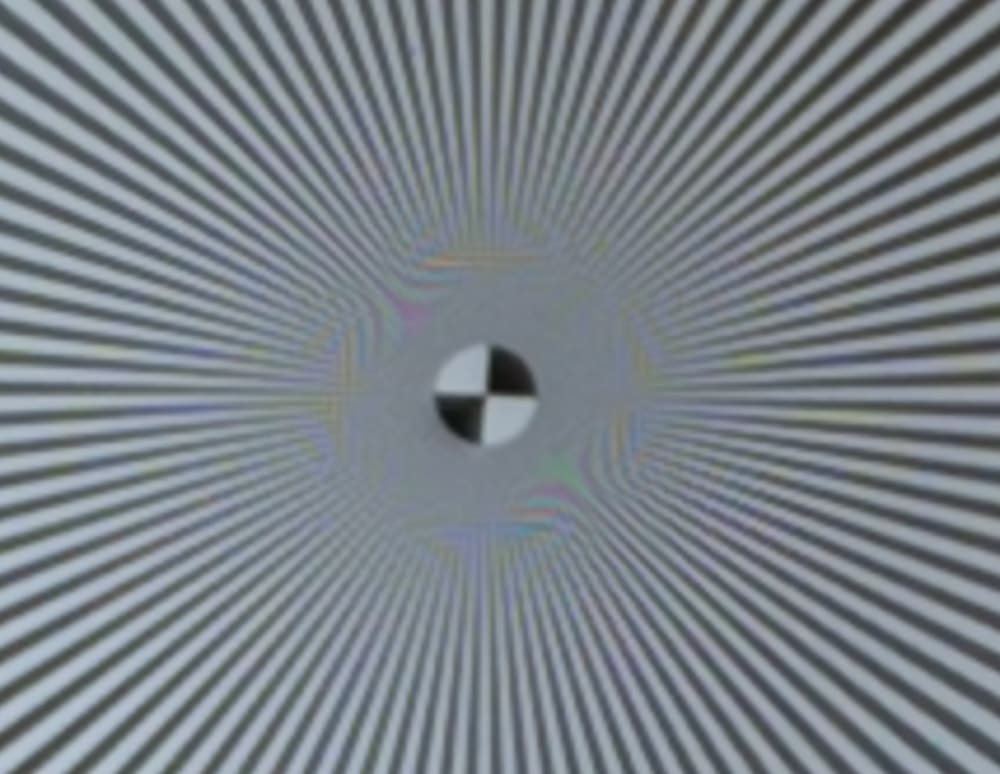
The cheap lens is not as sharp as the 24-70, but it’s not bad. Interestingly, sagittal/meridionol preferential directions are reversed.
Excellent series of posts. The Z50 and 16-50 lens is looking better and better. Based on this test, I could see a Z6/7 use buying this kit lens for compact use.
If the limited coverage is acceptable.
Does it cover 1:1 aspect ratio on full frame (24 x 24mm)? Or is the question moot, do the Z6/Z7 lock out anything other than APS-C framing when an APS-C lens is used on a full-frame camera?
I’ll check.
At least with F-mount DX lenses Z cameras force you to DX crop mode.